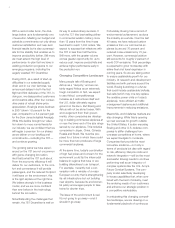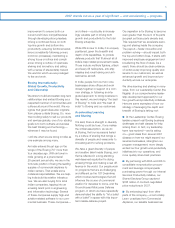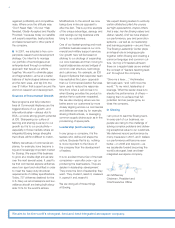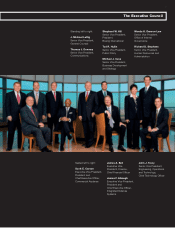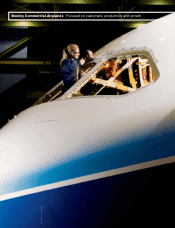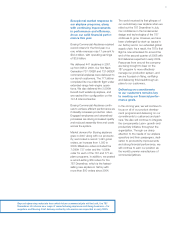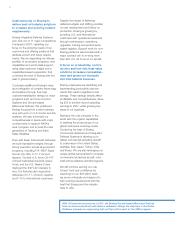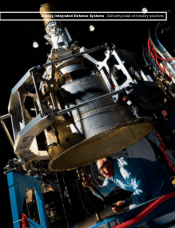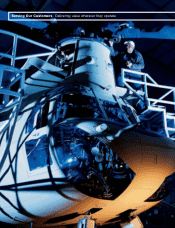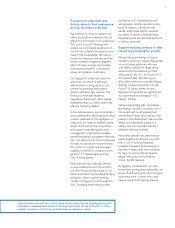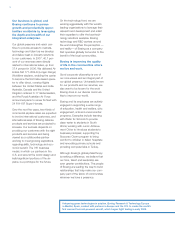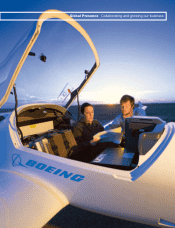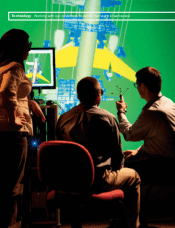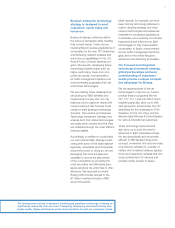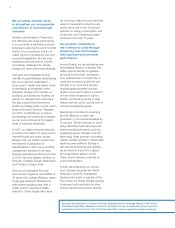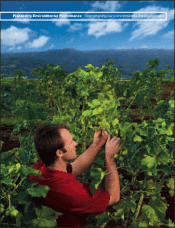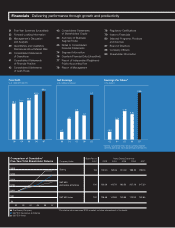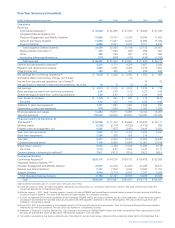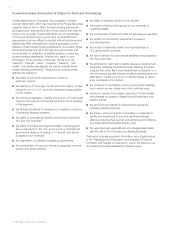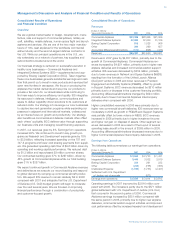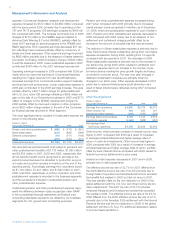Boeing 2007 Annual Report Download - page 17
Download and view the complete annual report
Please find page 17 of the 2007 Boeing annual report below. You can navigate through the pages in the report by either clicking on the pages listed below, or by using the keyword search tool below to find specific information within the annual report.
14
Our business is global, and
Boeing continues to pursue
growth-and-productivity oppor-
tunities worldwide by leveraging
the depth and breadth of our
integrated enterprise.
Our global presence and reach con-
tinue to provide access to markets,
technology and talent as we develop
and deliver best-in-industry solutions
to our customers. In 2007, 40.7 per-
cent of our revenues were directly
related to international sales, up from
37.4 percent in 2006. We delivered Air
India’s first 777-200LR (Longer Range)
Worldliner airplane, enabling the carrier
to become the first India-based opera-
tor to offer direct, nonstop flights
between the United States and India.
Australia, Canada and the United
Kingdom ordered C-17 Globemasters,
and the Royal Australian Air Force
announced plans to renew its fleet with
24 F/A-18F Super Hornets.
Over the next five years, two-thirds of
commercial airplane sales are expected
to involve international customers, and
international sales of Boeing defense
products and services are projected to
increase. Our success depends on
providing our customers with the right
products and services and being
viewed as a collaborative partner
working to meet growing aspirations
regarding skills, technology and eco-
nomic benefit. The 787 business
model, in which our partners in the
U.S. and around the world design and
build significant portions of the air-
plane, is a prototype for the future.
On the technology front, we are
working aggressively with the world’s
leading organizations to leverage their
research and development and enlist
their expertise to offer the best tech-
nology solutions available. Boeing
technology and R&D centers around
the world strengthen the perception —
and reality— of Boeing as a company
that operates globally but works to the
benefit of the local communities.
Boeing is improving the quality
of life in the communities where
we live and work.
Good corporate citizenship is one of
our core values and an integral part of
our global presence. Universally known
for our products and our services, we
also want to be known for the work
Boeing does in our diverse communi-
ties to improve our world.
Boeing and its employees are actively
engaged in supporting a wide range
of education, health and welfare, civic
engagement, arts and environmental
programs. Examples include teaming
with Water for Schools to provide
clean water to students in South
Africa; working with Junior Achieve-
ment China to introduce students to
business principles; supporting the
Soccorso Clown program to bring
comfort to children in Italian hospitals;
and renovating primary schools and
providing computer labs in Turkey.
Although Boeing’s global philanthropy
is making a difference, we believe that
our time, talent and leadership are
even greater contributions. The people
of Boeing are leading the way to build
relationships that help make our com-
pany part of the fabric of communities
wherever we have a presence.
Advancing green technologies in aviation, Boeing Research & Technology Europe
in Madrid, Spain, worked with partners in Europe and the U.S. to create the world’s
first manned fuel-cell-powered aircraft, which began flight testing in early 2008.


